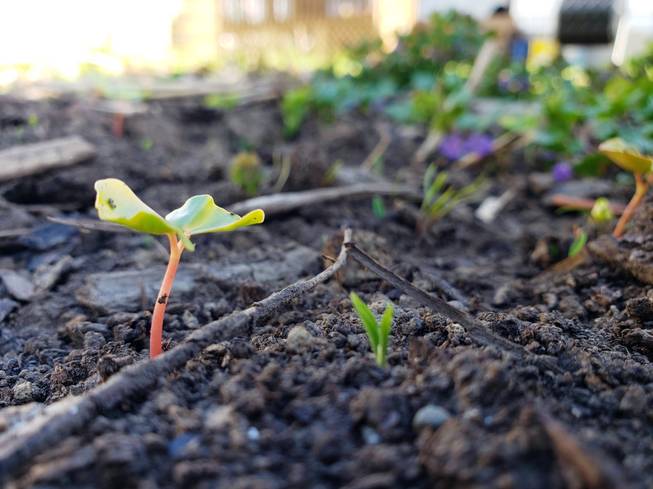By Alison Ward
Industry Insight from Ethical Corporation Magazine, a part of Thomson Reuters.
May 22 - The devastating floods in Pakistan during the summer of 2022, which resulted in a 40% loss of cotton crops, opens new tab across the areas affected, highlighted just how dire the consequences of climate change can be for those who make their living from the land, and just how vulnerable the supply chain in the textile industry is in our increasingly unpredictable climate. But this was not just an isolated event, as extreme heatwaves across northern India in one of the country’s biggest cotton-producing regions last year showed.
In this context, it’s perhaps unsurprising that the concept of regenerative farming has been receiving more and more attention in the apparel sector in recent years, with several brands announcing that they have adopted regenerative agriculture practices as part of their supply chain. While there is no universally agreed definition of what constitutes regenerative farming at present, the principles are commonly based on employing practices that work in harmony with nature, such as reducing the use of chemical pesticides and fertilisers, introducing intercropping to boost biodiversity and soil health and minimising water wastage.
These practices are nothing new in the cotton farming industry (in fact, they are often a return to more traditional farming methods that have been used for centuries) but are becoming increasingly vital to the long-term sustainability of cotton and, therefore, the fashion sector as each year a greater number of crops are lost to climate change-related weather events.
At the heart of regenerative agriculture is the concept of farming in a way that gives back to nature as much as it takes. It offers a farming system that addresses our climate and biodiversity challenges holistically, helping to support diverse species of wildlife and improve and protect soil health. A recent survey of cotton supply chain stakeholders by CottonConnect reinforced the critical nature of soil health in particular, as it was identified as the most important environmental factor for sustainable cotton, overtaking climate change and chemical use as a growing concern for those involved in the production of cotton.
Through our REEL Regenerative Cotton pilot initiative in Gujarat, India, we have trained over 350 smallholder farmers on regenerative agronomy, enabling them to cultivate cotton using economically viable, environmentally sustainable and socially acceptable principles. The comprehensive training sessions and demonstrations explored methods including agroforestry, biochar production, intercropping, compost or vermicompost use for soil management and bio decomposition using rotavator and cotton shredder.
A preliminary assessment of the first year of the pilot showed a 23% reduction in the use of chemical fertilisers by project farmers compared with control farmers. It also showed that greenhouse gas emissions per acre from the project farms were approximately 23% lower than those from the conventional control farms. These results suggest the potential for highly positive outcomes for both soil health and the environment, but the benefits of regenerative agriculture go way beyond this.
The most significant of these benefits are farmers’ income and livelihoods from better crop yields, boosted farm profitability and diversification of income through techniques such as intercropping and agroforestry. This, in turn, led to better social outcomes for farming communities, such as improved water management, increased wildlife populations and enhanced climate resilience.
The positive impacts of regenerative farming can be particularly significant for women cotton farmers who, according to FAO estimates, opens new tab, make up around 43% of the agricultural workforce in developing nations, rising to 60% in Africa and Asia. Despite their enormous contributions in planting and harvesting, which directly impact the quantity, quality and long-term sustainability of cotton farming, their essential roles often go under the radar.
Recognising the pivotal role of women in cotton farming and the pressing need to address climate change, we set up a new Climate Change Ambassadors programme in 2022, which aims to support women farmers to become change leaders in climate resilience. The programme focuses on capacity building in climate-smart agriculture practices, providing participants with knowledge and awareness of farming practices to adapt to the impacts of climate change. So far, 42 women cotton farmers from Gujarat, India, have been trained to be ambassadors, and they have since trained a further 30 farmers each, imparting valuable knowledge to over 1,200 women.
As well as improving knowledge and understanding of the impacts of climate change on cotton farming and how regenerative practices can help mitigate against these (post-training assessment shows that awareness of these practices has risen from 46% to 70%), our work with women farmers has highlighted the enormously positive impact of empowering them to take on more of a leadership role within their community. Many of the women on the programme talked about a sense of pride in being a pioneer for regenerative farming and in being able to share their knowledge with friends, family and peers. They also reported increased confidence in public speaking as a result of their ambassador roles, which enabled them to contribute more vocally on issues and decision-making in their community as well as in their families and farms.
Perhaps most importantly, the transition to regenerative farming practices appeared to make the farmers we have worked with across these programmes more optimistic and confident about their futures in the face of severe challenges caused by climate change. Confident not only about their ability to adapt to these challenges and ensure they were able to continue making a living from their farms but that they were building a more positive future for their families as a result.
We believe that regenerative cotton has enormous potential to support communities in finding local solutions designed by and with local people so that both farmers and the environment can thrive. Now is the time for brands to invest in scaling up these types of initiatives so that regenerative approaches can play a key role in transitioning to a more sustainable future for the industry.
Source: Reuters

